We’ve become immune to the stories we hear every day about professional athletes who get into trouble with the law. Their crimes range from acts of violence to murder and everything in-between.
Our story today is about one of these athletes. He was a French footballer. In other words, he played soccer. His saga starts with the first World Cup in 1930 and ends fourteen years later with his execution at the hands of the French Resistance. He was a well-known and vicious Nazi collabo (collaborationist).
Meet Our Villian
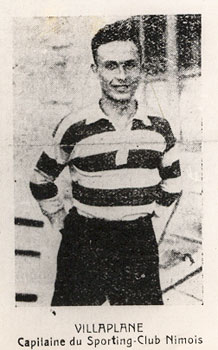
Alexandre Villaplane (1905–1944) was born in Algiers and between 1921 and 1935 played football (i.e., soccer) for various French club teams. Known for his vicious tackling and headers, Villaplane’s greatest achievement was on the pitch (i.e., field) playing for the French national team (known as Les Bleus or The Blues). The national team kit (i.e., uniform) is red, white, and blue. Unfortunately, by 1944, Villaplane was wearing a different uniform and was better known for his cruelty, blackmail, and murders.
Learn more about The 1930 World Cup
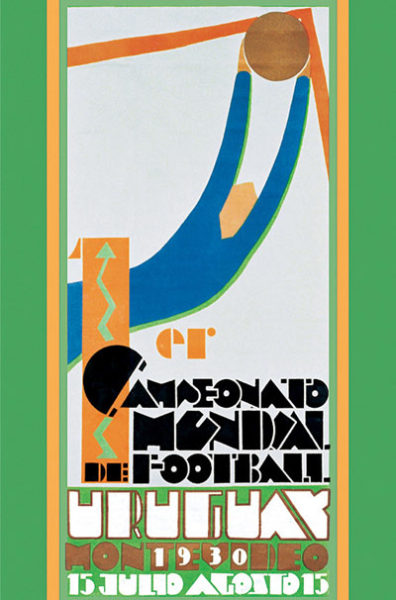
The first FIFA World Cup was played in Uruguay between 13 to 30 July 1930 and consisted of thirteen teams including France and the United States (yep, you read this correctly and here’s the other shocker—the United States national team came in third).
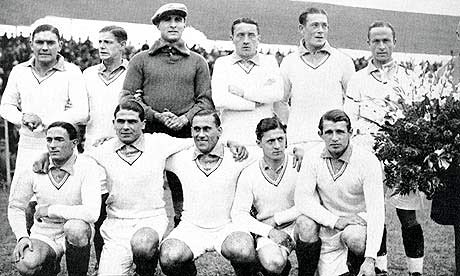
Villaplane was named captain of the French National World Cup team, Les Bleus. France was one of four teams in Group 1: Argentina, Chile, and Mexico rounded out the group. On 13 July 1930, he led the team to its only victory of the 1930 World Cup—a 4 to 1 score over Mexico. The next two games (against Argentina and Chile) were both 1 to 0 losses. Only Argentina broke out of the group stage and advanced to the knockout stage. Ultimately, Uruguay would beat Argentina in the finals with a score of 4 to 2. The World Cup was ultimately seen as the highlight of Villaplane’s football career. After this, his club career went into a downward spiral.
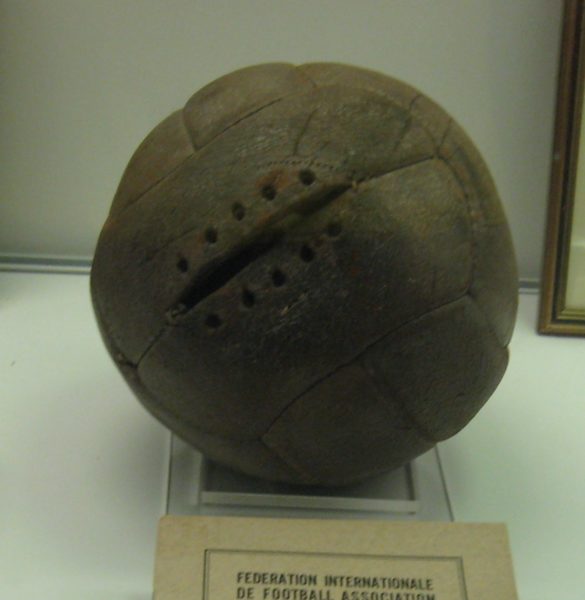
French Football Clubs
After the World Cup, Villaplane went on to resume playing for his club. While players were not supposed to be paid, in reality the clubs paid each of them a salary. Prior to the World Cup, Villaplane had a reputation as a mercenary, moving between teams for the highest payment. Soon after returning to France from Uruguay, a playboy lifestyle replaced Villaplane’s attitude and enthusiasm towards the game. His club career took a U-turn and soon Villaplane would be shuffled off from team to team after managers got tired of dealing with him.
The Second World War
For six weeks beginning 10 May 1940 the Nazis army overran France. By 14 June 1940, their troops entered the “open” city of Paris and on 22 June, representatives of the Vichy government signed the official surrender documents. Five years earlier, Villaplane had been thrown in prison for racketeering and blackmail. However, with the new ruling class in town, Villaplane would not spend much more time in jail.
The French Gestapo
I hope you’ll remember my blog post of the same title. (Click here to read The French Gestapo.) If not, I suggest you visit the post as it goes into greater depth than I will devote here. Briefly, Henri Lafont was a career criminal who threw his hat into the Nazi ring. He formed the Bonny-Lafont Gang as a French extension of the Gestapo. He recruited and released hardened criminals to join his gang—including Alex Villaplane.
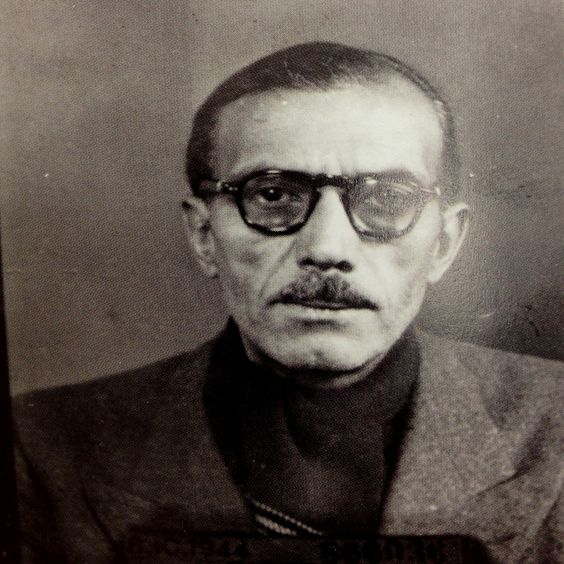
The Bonny-Lafont Gang was nothing more than a murderous bunch of thugs out to enrich themselves under the protection of the Gestapo. The Black Market provided much of their wealth and the Nazis were only too happy to have them provide the administration albeit for a price. The other function the gang performed was to identify, interrogate, torture, and execute members of the French Resistance. Gang members were more feared by the Resistance than the Nazis because they were French and it was easy for them to infiltrate resistance networks.
The gang operated out of 93 rue Lauriston that was nicknamed “The Street of Horrors” by the locals. (Click here to read The Street of Horrors.) Torture chambers were set up in the building and the screams of their victims could be heard in the night. In the basement was the execution chamber where posts stood to tie up the condemned.
Brigade Nord Africain
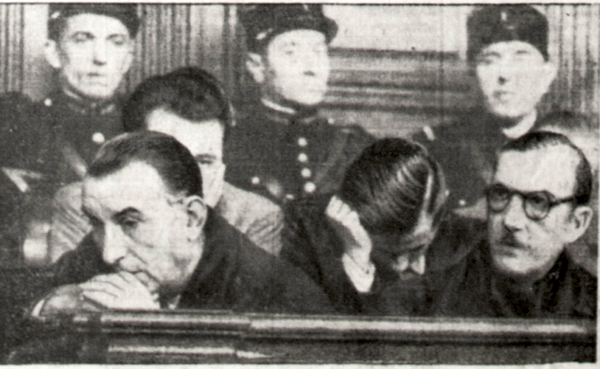
Since Villaplane was Algerian by birth, Lafont put him in charge of an immigrant group called the Brigade Nord Africain (North African Brigade). The group’s mission was to counter increasing French resistance in Southern France. Villaplane was commissioned as an SS sub-lieutenant and wore the appropriate SS uniform. He quickly built a reputation for merciless cruelty. He personally oversaw massacres of prisoners, even shooting many of them himself. After the liberation, evidence emerged of the group’s activities including rape, robbery, pillaging, and murder.
Villaplane would extort money (the normal amount was 400,000 francs) from his prisoners by promising them freedom in exchange for a price. After the money was paid, he executed them and stole their personal possessions. At some point, Villaplane became the personal driver for Lafont in his white Bentley.
THE ÉPURATION–watch a video clip
The Épuration or post-liberation purge began immediately after the Germans left. Collaborationists were dealt with severely and in many cases, without trial. Retribution ranged from shaving heads (primarily for the women who were termed “horizontal collabos”) to executions. Historians have estimated that up to 10,000 collabos (or suspected collabos) were executed during this time.
The first groups of collabos hunted down immediately after the Liberation were members of the Bonny-Lafont gang. They weren’t hard to find because they had flaunted their activities during the Occupation and members were well known to the Parisians.
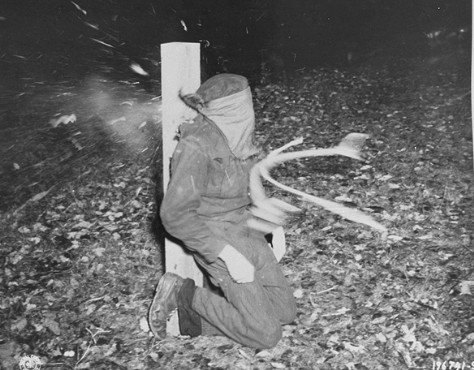
Villaplane was one of the first to be arrested (with Henri Lafont and his partner, Pierre Bonny). Along with the leaders of the Bonny-Lafont gang, Villaplane was put on trial, found guilty, and sentenced to death. Villaplane and his bosses were executed by firing squad on 26 December 1944.
Watch arrest of the collabos.
Footballer Or Monster?
So was Alex Villaplane a good footballer who turned evil or was he fundamentally evil who just happened to have the talent to play good football?
I suppose the execution of Villaplane was the ultimate red card for him.
What’s New With Sandy and Stew?
I’ve entered into the phase of my books that I really enjoy—hunting down the images. For those of you who have seen my books know that we use a lot of photos, engravings, paintings, and other illustrations. The photos used for the French Revolution and Medieval Paris books have been contemporary ones. Obviously, photography was unavailable prior to the middle of the 19th century. With the new book on the Nazi occupation of Paris, photographs exist and we can use them to show you the “then and now.” Stay tuned as I explain in future blog posts my process for locating and selecting these images.
Someone Is Commenting On Our Blogs
We’ve been getting some new followers on Twitter. Many of them come to us as a result of our engagement with other bloggers. I was honored to have been asked to write a guest blog for Sarah and Joanne (authors of An Intimate Mistress: The Life, Loves and Family of the Celebrated Grace Dalrymple Elliott). Read it here.
My friend, Mark V. is an economist and amateur historian. One of his favorite topics is the French Revolution. Mark has written a presentation on the economics of the revolution. I’ve asked him to do a guest blog of me on that topic. We can’t wait to get that one out to all of you.
Thanks to Adelaide D. for her recent comments on the blog about the dogfight under the Eiffel Tower.
Also, thank you to Joe S. for encouraging me to write a historical novel. I’m going to give this serious consideration. There are thousands of stories waiting to be told.
If there is a topic you’d like to see a blog written about, please don’t hesitate to contact me. I love hearing from you so keep those comments coming.
Why Would You Want To Buy Our “Walks Through History” Books?
Simple.
You like to travel and experience history and historical events. You like to see original buildings that had a significant impact on the people and events of the history you’re engaged with. You want to know the stories behind the brick and mortar in front of you.
The walking tour books are meticulously researched so you can go directly to those sites and learn about the building’s history as well as an introduction to some of the more interesting people associated with it.
Thank You
Sandy and I appreciate you visiting with us. We have some exciting things on the horizon and we’ll keep you updated as we go along.
Share This:
Follow Stew:
Find Stew’s books on Amazon and iBooks.
Please note that we do not and will not take compensation from individuals or companies mentioned or promoted in the blogs.
Walks Through History
Copyright © 2017 Stew Ross

